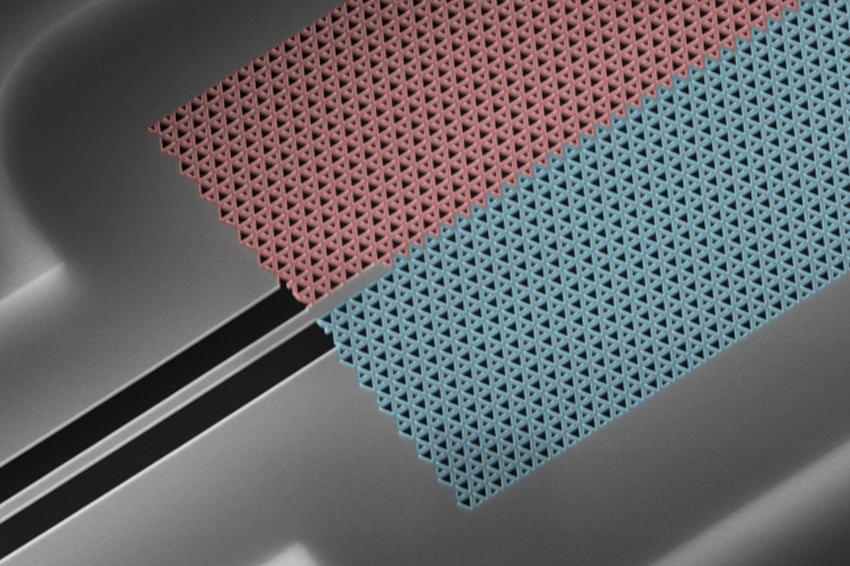Challenge of backscattering protection in integrated photonics
10.05.2023 - Danish researchers raise questions about the proposed value of topological protection against backscattering in integrated photonics.
The field of integrated photonics has taken off in recent years. Offering improved performance, reliability, energy efficiency, and novel functionalities, integrated photonics has immense potential and is fast becoming a part of the infrastructure in data centers and telecom systems, while also being a promising contender for a wide range of sensors and integrated quantum technologies. Significant improvements in nanoscale fabrication have made it possible to build photonic circuits with minimal defects, but defects can never be entirely avoided, and losses due to disorder remains a limiting factor in today’s technology. Minimizing these losses could, for example, reduce the energy consumption in communication systems and further improve the sensitivity of sensor technology. And since photonic quantum technologies rely on encoding information in fragile quantum states, minimising losses is essential to scale quantum photonics to real applications. So the search is on for new ways to reduce the backscattering, or even prevent it entirely.
One suggestion for minimizing the loss of photons in an integrated photonic system is to guide the light through the circuit using topological interfaces that prevent backscattering by design. “It would be very nice if it were possible to reduce losses in these systems. But fundamentally, creating such a one-way street for photons is a tough thing to do. In fact, as of right now, it is impossible; to do this in the optical domain would require developing new materials that do not exist today,” says Søren Stobbe, Group Leader at DTU Electro. Circuitry built from topological insulators would, in theory, force photons to keep moving forward, never backward. The backwards channel would simply not exist. While such effects are well-known in niche electronics and have been demonstrated with microwaves, they have yet to be shown in the optical domain.
But full topological protection is impossible in silicon and all other low-loss photonic materials, because they are subject to time-reversal symmetry. This means that whenever a waveguide allows transmitting light in one direction, the backwards path is also possible. This means that there is no one-way street for photons in conventional materials, but researchers have hypothesized that a two-way street would already be good enough to prevent backscattering. “There has been a lot of work trying to realize topological waveguides in platforms relevant for integrated photonics. One of the most interesting platforms is silicon photonics, which uses the same materials and technology that make up today’s ubiquity of computer chips to build photonic systems, and even if disorder cannot be entirely eliminated, perhaps backscattering can,” says Søren Stobbe.
New experimental results from DTU strongly suggest that with the materials available today, this likely will not happen. Although several previous studies have found that it may be possible to prevent backscattering based on various indirect observations, rigorous measurements of the losses and the backscattering in topological waveguides were so far missing. The central experiments were performed on a highly well-characterized state-of-the-art type of silicon waveguide, showing that even in the best waveguides available, the topological waveguides show no protection against backscattering. “We fabricated the best waveguide obtainable with current technology but we never saw topological protection against backscattering. If the two-way topological insulators protect against backscattering, they would only be effective at disorder levels below what is possible today," says PhD-student Christian Anker Rosiek.
He conducted most of the fabrication, experiments and data analysis along with postdoc Guillermo Arregui. “Measuring the losses alone is crucial, but not enough, because losses can also come from radiation out of the waveguide. We can see from our experiments that the photons get caught in little randomly located cavities in the waveguide as if many of tiny mirrors had been randomly placed in the light’s path. Here, the light is reflected back and forth, scattering very strongly on those defects. It shows that the backscattering strength is high, even in a state-of-the-art system, proving that backscattering is the limiting factor," says Guillermo Arregui.
The study concludes that, for a waveguide to offer protection against backscattering, you would need the topological insulator to be constructed from materials that break time-reversal symmetry without absorbing light. Such materials do not exist today. “We are not ruling out that protection from backscattering can work, and absence of evidence must not be confused with evidence of absence. There is plenty of exciting research to be explored within topological physics, but moving forward, I believe researchers should take great care in measuring losses when presenting new topological waveguides. That way, we will get a clearer picture of the true potential of these structures. Suppose someone does indeed develop new, exotic materials that allow only propagation in one direction, our study has established the tests needed to claim real protection against backscattering.," says Christian Anker Rosiek. (Source: DTU)







